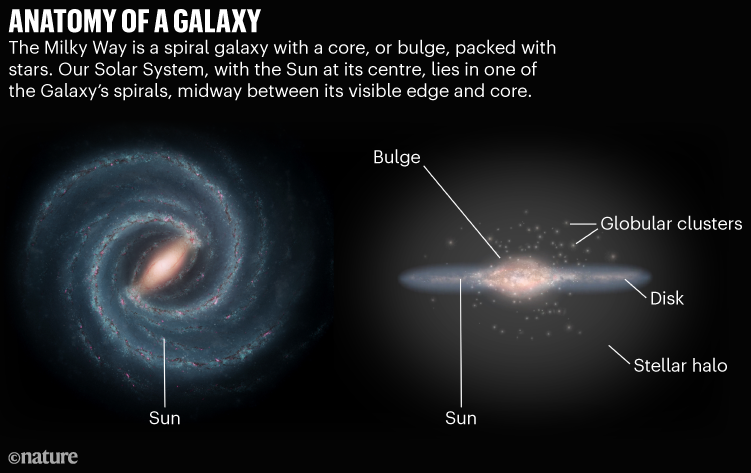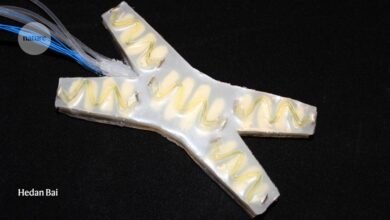
Our Galactic home just got a remodel. Peering through the dust and gas that intersperse our Galaxy, astronomers have found that the Milky Way’s core is less dense than originally thought.
This resculpting actually makes the Milky Way “less weird”, says Gail Zasowski, an astronomer at the University of Utah in Salt Lake City. The stars and other components of the Milky Way seemed more compact than those of galaxies similar to ours that scientists have been able to see and measure directly. The measurements made our Galaxy look “cute and small” in comparison, Zasowski says, “but you get a little suspicious” about why it is different.
Zasowski and her colleagues made their Galactic revision by measuring the locations and distances of almost a quarter of a million red giants — massive old stars — using survey data from the Apache Point Observatory Galactic Evolution Experiment (APOGEE). Normally, light from celestial bodies such as red giants can be obscured from the view of telescopes on Earth by interstellar dust, but the Apache observatory, in Sunspot, New Mexico, can detect near-infrared wavelengths, which pass through the dust. The researchers reported their findings on 27 June in Nature Astronomy1.
A better view
Determining the Milky Way’s precise structure (see ‘Anatomy of a Galaxy’) while residing in it has always been a challenge. Zasowski likens it to working out how big a city is while standing on a street corner. “You can see the people, you can hear the cars, you see what the buildings look like in exquisite detail,” she says, but it’s impossible to know what the whole city looks like from that vantage point. By contrast, the ‘satellite view’ we get when observing galaxies outside our own lets us see the city’s shape and sprawl.
To make matters worse, dust spread throughout our Galaxy obscures our view of faraway stars, especially those near its centre. (Our Solar System resides on one of the Milky Way’s spiral arms, about halfway between its visible outer edge and its core.) Previous estimates of the Galaxy’s size and shape2 have been made by determining the distribution of stars in our Sun’s neighbourhood and extrapolating this measurement on the basis of models of simple galaxies.

Source: NASA/JPL-Caltech, ESA/ATG medialab
The latest census of red giants — good markers of visible matter in the Galaxy — is the best one ever collected, says Robert Benjamin, an astronomer who studies the Milky Way at the University of Wisconsin-Whitewater. It enabled the researchers to get a better idea of the distribution of the Galaxy’s stars, particularly in its central ‘bulge’.
Instead of seeing the population of red giants increase exponentially from the edge of the Galaxy towards the bulge, the researchers observed that it levelled out near the midway point, implying that the central portion of the Milky Way’s disk is not as densely packed as models had assumed. And if the matter contained in the Galaxy isn’t stuffed into the centre, it must be more spread out than previously thought.
Consequences of a remodel
One way to measure a galaxy’s diffuseness is to determine its half-light radius: the distance from its centre at which you can draw a circle that will encompass half the total light emitted by the galaxy. The researchers, for the first time, used direct measurements to calculate the Milky Way’s half-light radius, and it was roughly twice as large as that estimated from the current best models of the Galaxy.
This intriguing result shows that our Galaxy is complex and “does not want to be hammered into a box” by simple models, Benjamin says.
“There are a lot of things that need to be revisited” with this new finding, says co-author Jianhui Lian, an astronomer at Yunnan University in Kunming, China. For instance, it might lower our estimate of the total mass of the Milky Way, he says, and in turn, that could imply that our Galaxy holds more dark matter than originally thought.




